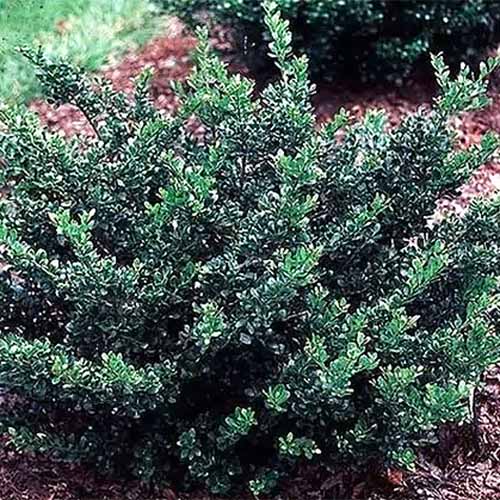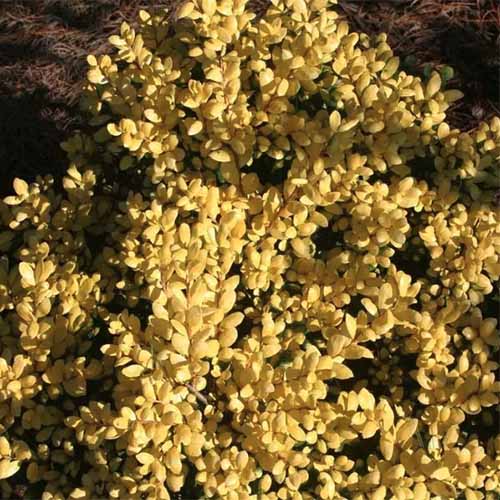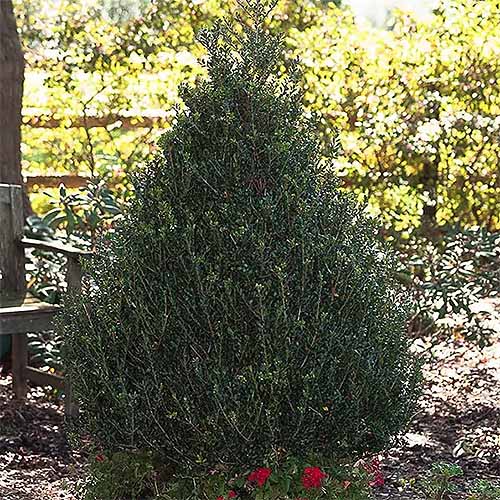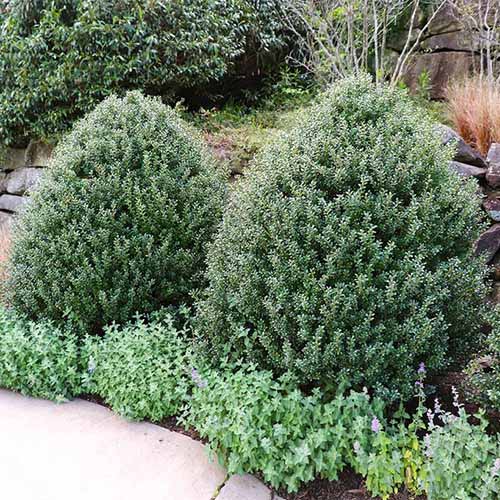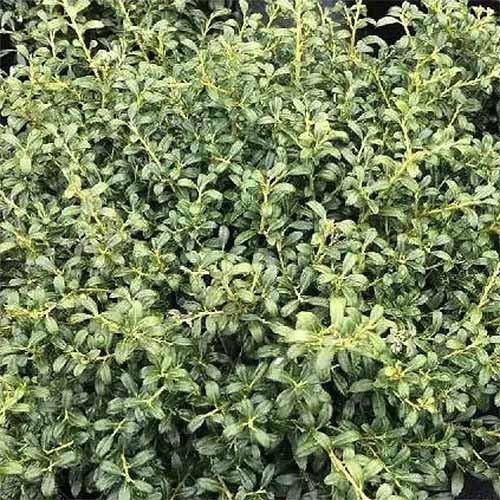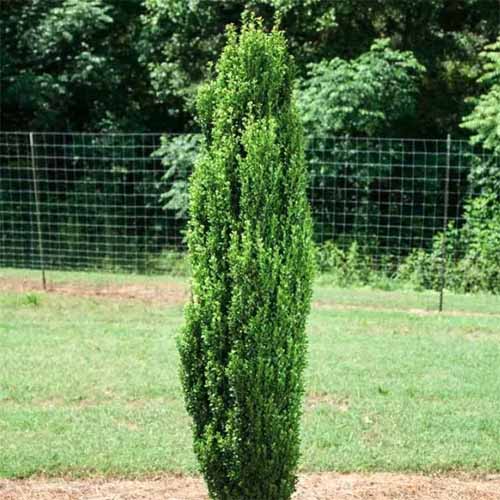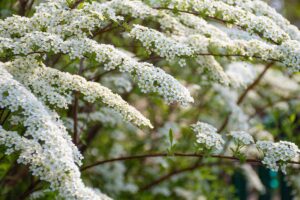I adore Japanese hollies. They’re not fussy about their environment and they maintain their shape without much – if any – pruning. They’re the industrious gardener’s alternative to disease-prone and maintenance-heavy boxwoods.
There are dozens of named cultivars and they come in a surprising array of growth habits.

We link to vendors to help you find relevant products. If you buy from one of our links, we may earn a commission.
Need a tall privacy screen? They’ve got you covered. Want a ground cover to keep a patch of your yard weed-free? There’s one for that, too. Just looking for a compact shrub with bright, evergreen foliage? Not a problem.
Up ahead, we’ll take a look at some of the most common Japanese holly cultivars, as well as a few of the more exceptional ones that are worth seeking out:
21 of the Best Japanese Holly Varieties
Japanese holly (Ilex crenata) is native to – you got it – Japan, as well as other parts of eastern Asia.
The scientific name actually comes from the Latin name for holly oak (Quercus ilex). Both plants are evergreens and the holly oak has spiny leaves like many species of holly do.
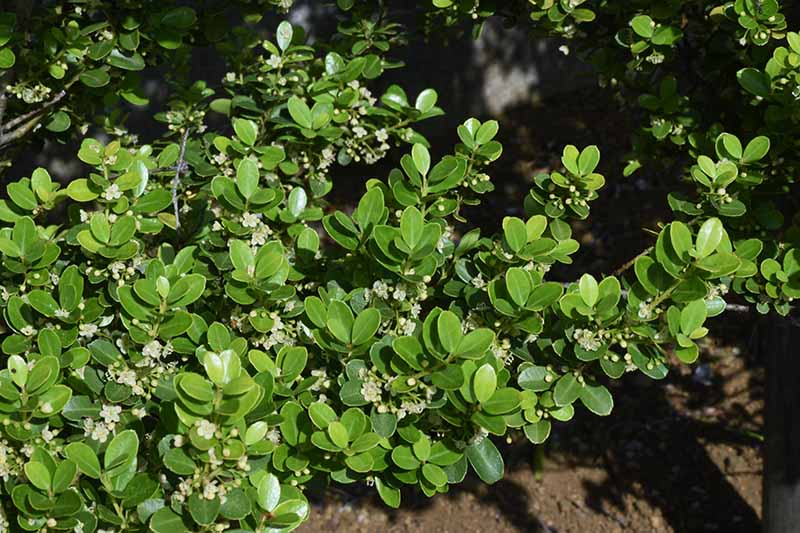
Speaking of the foliage, I. crenata doesn’t have spiky leaves. They’re actually quite soft and pliable, which makes these shrubs ideal if you want something you can plant near a patio or sidewalk and don’t want to risk snagging a sweater (or worse, your skin).
Crenata is Latin for scalloped, which should give you an indication of what the leaves can look like.
These plants do best in USDA Hardiness Zones 5 to 9, depending on the cultivar, and can tolerate soil that ranges from heavy clay to loose sand.
They thrive in full sun and partial shade alike and can even withstand some drought. They don’t, however, do well in muggy, hot areas. Other than that, they’re pretty versatile.
The plants have small, evergreen, alternate leaves, which is one of the ways you can tell them apart from boxwoods (Buxus spp.). Boxwoods have opposite leaves.
Japanese holly plants are either male or female, which isn’t really important unless you want to plant the seeds from the berries, which ripen in the fall.
Berries only appear on female plants if they have been successfully pollinated – for that, you need a male plant growing nearby.
If you want to know more about planting, raising, and caring for these marvelous shrubs, head on over to our guide to growing Japanese holly.
1. Brass Buckle
Brass Buckle® (I. crenata ‘ANNYS1’) is a lovely, less common male dwarf cultivar that has bright yellow foliage on an 18-inch tall and wide plant.
The leaves emerge as green, but they gradually mature to solid yellow that almost seems to glow from within. It does well in heat, unlike many other cultivars, and isn’t prone to sunburn.
2. Chubby Hubby
The dark green foliage on Chubby Hubby™ (I. crenata ‘MAD-IC-1’) is extremely attractive, appearing to be almost black in some light.
This was an open pollinated cross between ‘Sky Pencil’ and an unknown male parent that was cultivated from seed. It grows to mature dimensions of seven feet tall and four feet wide.
Unlike ‘Sky Pencil,’ which can have splayed branches, the branches on Chubby Hubby™ are strongly upright.
By the way, Chubby isn’t actually a hubby. This plant is a female, and while it can be difficult to find, it’s worth seeking out.
3. Compacta
‘Compacta’ is popular because it fits well in small spaces, never growing more than five feet tall and wide, with a beautiful mounding shape. It has petite, glossy green leaves.
This female cultivar makes an excellent substitute for boxwood, especially if you have clay, or moist, acidic soil. It needs less pruning than boxwoods to maintain its shape, as well.
Grab one at Nature Hills Nursery in a #3 container.
4. Convexa
This cultivar (I. crenata ‘Convexa’) is popular because of its striking, convex leaves – that means they form an upside-down cup.
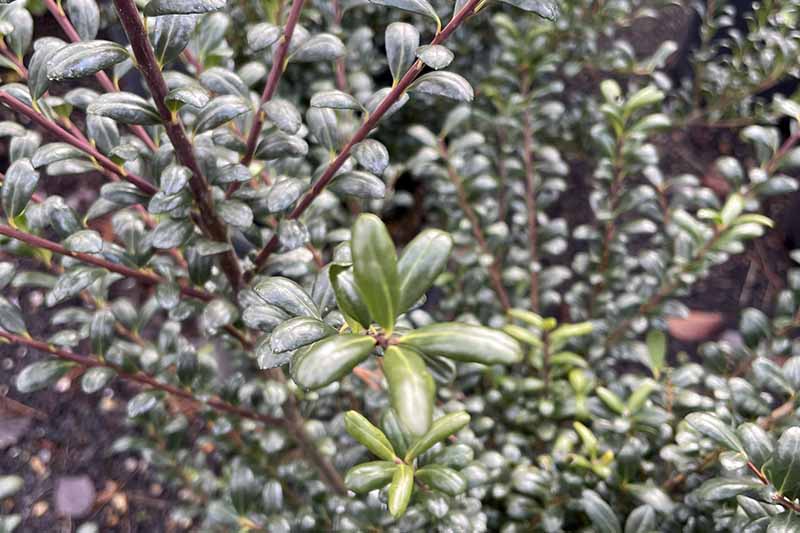
While it may eventually reach 10 feet tall over the decades, it typically stays closer to eight feet tall and 10 feet wide. ‘Convexa’ is a female plant.
It was introduced into the US by the Arnold Arboretum in 1919 and is valued for its hardiness.
5. Drops of Gold
If you love the shape of the foliage, the hardiness of Japanese holly, and its evergreen characteristics, but you want something other than green in your garden, take a look at ‘Drops of Gold.’
Aptly named, the foliage is variegated golden yellow and shaped like little drops of water.
This female cultivar grows four feet tall and five feet wide when mature. It doesn’t handle heavy clay as well as some of the other cultivars, but it is more tolerant of shade. The color might be more subdued in increased shade, however.
This cultivar is relatively new on the scene. It was discovered in 1987 and is believed to be a mutation of ‘Hetzii.’
Nature Hills Nursery has this beauty in #3 containers.
6. Dwarf Pagoda
Yep, you guessed it, ‘Dwarf Pagoda’ is a petite cultivar. It only reaches about 18 inches tall with proportionally tiny leaves.

It also has an extremely compact, dense growth habit and a lovely mounding shape. It’s perfect for growing in containers or in groups. This female cultivar requires no shearing to maintain its tidy shape.
7. Geisha
‘Geisha’ has some of the smallest leaves you’ll ever see on this species. The foliage almost looks like something lush and small, like String of Pearls (Curio rowleyanus) or peperomia String of Turtles (Peperomia prostrata).
The plant itself grows to about four feet tall and wide, with a dense growth habit. Unlike other cultivars, it produces bright yellow berries, which creates a striking winter display against the dark green leaves.
While it isn’t as popular as some of the others on this list, it’s stunning, so keep an eye out.
8. Golden Gem
‘Golden Gem’ is a male cultivar with green flowers. On top of the unusual blossom color, it also stands out from other cultivars thanks to its striking golden-yellow leaves.
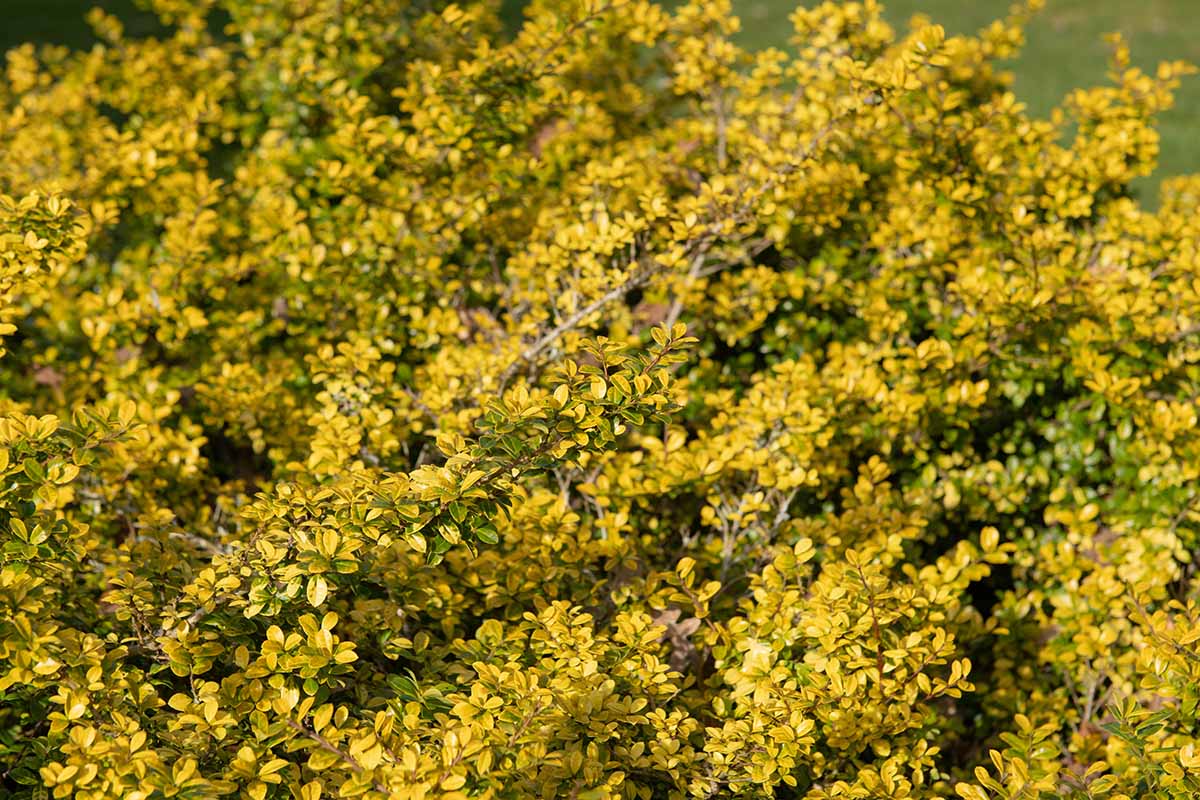
It reaches two feet tall and wide and has a round growth habit with a flat top.
9. Helleri
‘Helleri’ is notable for its dense, compact growth that requires little or no pruning to maintain.
Often sold under the name Heller’s Japanese holly, it’s suitable for Zones 5 to 8 and maintains a dense, compact, dwarf growth habit. It tops out at four feet tall and five feet wide.
While it has a lovely natural shape, it is extremely tolerant of heavy pruning if you are on the lookout for a variety that you can shape instead. This one is a female cultivar.
It originated in Newport, Rhode Island in 1925 and has been popular ever since for its dwarf, compact shape.
Nature Hills Nursery sells ‘Helleri’ in #3 containers.
10. Hetzii
This female cultivar can grow up to 10 feet tall in as many years, but it usually stays a few feet shorter, topping out at about six feet.
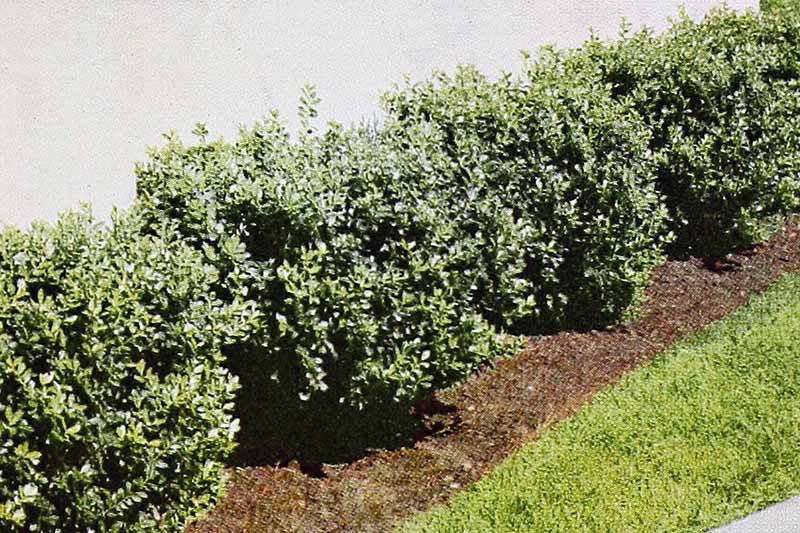
‘Hetzii’ looks similar to ‘Convexa,’ of which it is a clone, only larger and with proportionally larger leaves. Sometimes labeled as ‘Hetzi,’ or Hetz’s holly, it was introduced to market by Fairview Evergreen Nurseries in Pennsylvania.
11. Hoogendorn
‘Hoogendorn’ is ideal if you want something low-growing with a spreading habit.
This cultivar can eventually reach 24 inches tall and three feet wide, with a slow to moderate growth habit. It produces dense growth that is nearly impossible for weeds to grow through.
The leaves on this male plant are petite, soft, and medium green. ‘Hoogendorn’ is hardy in Zones 6 to 9.
Bring one home from Nature Hills Nursery in a #3 container.
12. Mariesii
‘Mariesii’ is a pillar of green standing tall in the garden. This female cultivar can top out at 20 feet while remaining a compact six feet wide, though it takes decades to reach that size.
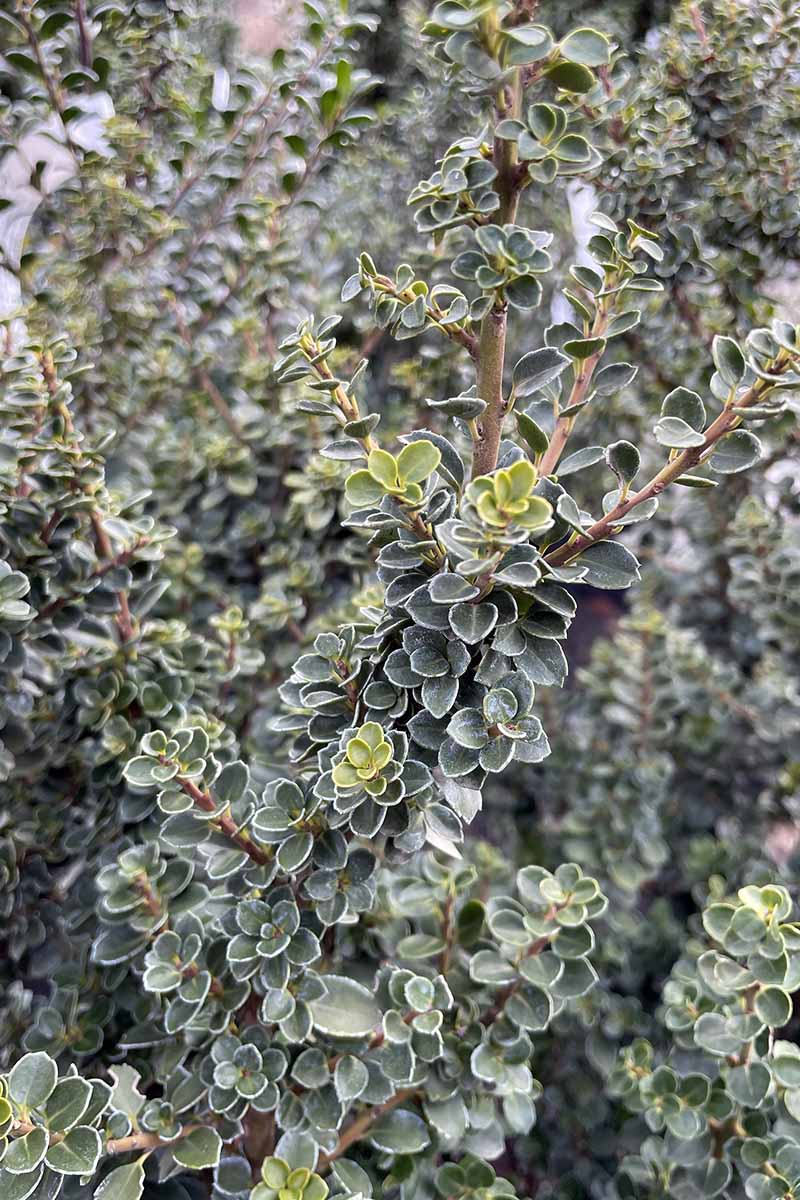
The tiny leaves are dark green and thick, with a narrow band of white around their margins.
13. Patti O Box
Those in Zones 6 to 8 are lucky enough to be able to grow Patti O Box® (I. crenata ‘FARROWSK6’), which is a cross between ‘Sky Pencil’ and an unnamed cultivar.
It maintains a dense, compact pyramid shape that is extremely distinct. It almost looks like a tiny Christmas tree at four feet tall and two feet wide at the base. Best of all, it maintains this shape with little or no pruning!
When I say little, that’s no joke. You may have to clip off one errant branch here or there that sticks out just a touch further than its neighbors. Otherwise, it almost looks like you have carefully shaped the plant into a topiary, when in reality you have pretty much forgotten about maintaining it entirely.
Place it in a large container to add some interest to a patio.
Dreaming about this low-maintenance stand-out? Nab one at Nature Hills Nursery in a #3 container.
14. Sky Box
Sky Box® (I. crenata ‘Farrowone’) looks similar to the classic ‘Sky Pencil,’ but it’s shorter and slightly wider. It stands about five feet tall and grows up to three feet wide, though it’s usually narrower.
It’s tolerant of pruning if you want to create an architectural focal point, or you can allow it to take its natural columnar shape. This male plant has flat leaves.
Hurry over to Nature Hills Nursery to pick one up in a #3 container.
15. Sky Pencil
If you want a stunning, upright plant with an extremely thin shape, ‘Sky Pencil’ is it. With little or no pruning, it maintains an upright, pencil-thin form that stretches up to eight feet high.
Even at that height, the plant will only be about 18 inches wide.
You can grow these close together to form a hedge, or separately as statement specimens. This is a female cultivar.
Home Depot carries 12- to 24-inch-tall plants in gallon-size containers so you can add this stately beauty to your garden.
16. Steeds
‘Steeds’ has a compact pyramid shape that requires little upkeep to maintain, topping out at eight feet with a spread of six feet at the widest point. The leaves on this female cultivar are deep, shiny, dark green.
You can find ‘Steeds’ in one- and three-gallon containers at Fast Growing Trees.
17. Snowflake
If you’re looking for a female plant, Snowflake, aka I. crenata ‘Shiro-Fukurin,’ is a slow-growing cultivar that reaches six feet tall within about 10 years, but eventually it can grow to 10 feet tall.
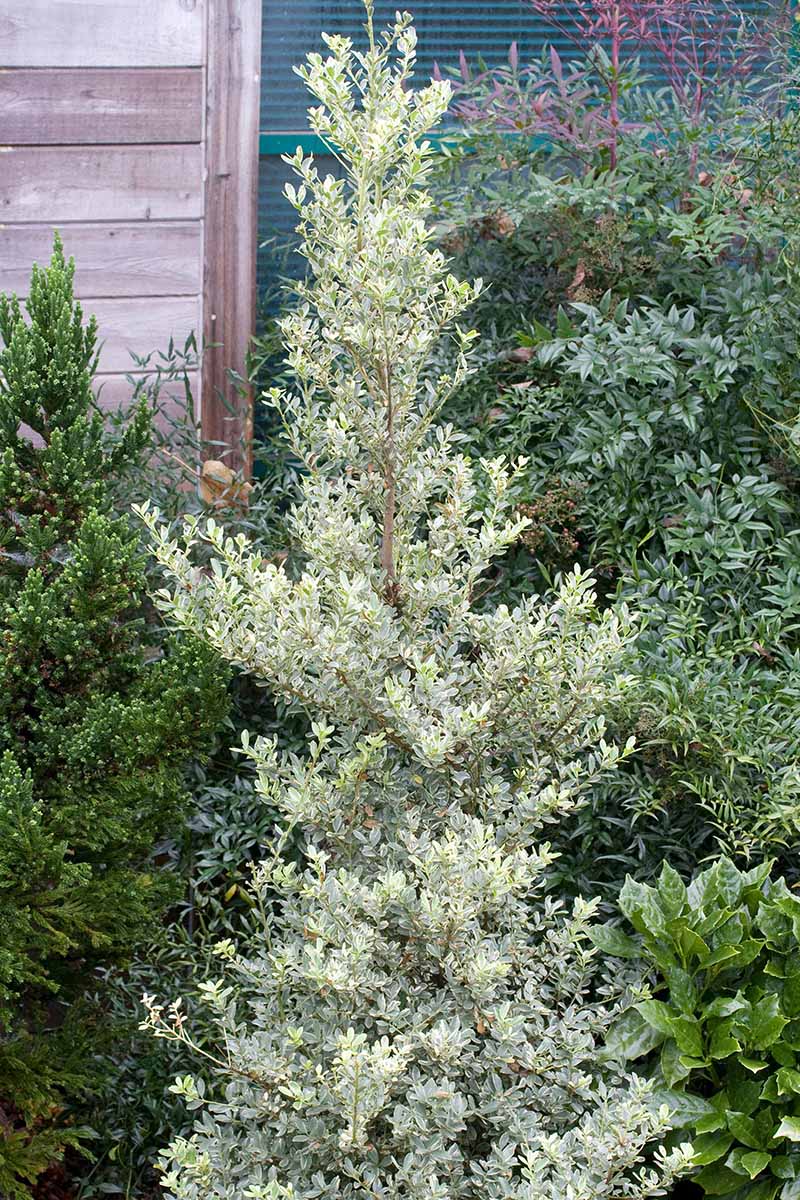
The foliage has creamy white margins with gray-green centers. Some leaves might have splotches of creamy white in the centers, and others may even be entirely creamy white.
Grow these in partial shade, as the foliage can tend to scorch in full sun.
18. Soft Touch
If you’ve ever planted a holly near a sidewalk or driveway, then you know the pain they can inflict. Those stiff, spiny leaves can be unpleasant if you brush up against them.
I. crenata ‘Soft Touch’ lives up to its name. The leaves are soft and completely devoid of spines, and the new stem growth is soft and flexible as well. Not only will you not need to avoid them, but you might also actually find yourself reaching out to brush your hand along these plants.
You’re probably thinking to yourself that Japanese hollies never have spines on the leaves, and that’s true. But not all of them are this flexible and velvety to the touch.
And the benefits don’t stop in the tactile world. They’re pretty to look at because each leaf has a distinct silver vein running down the middle, which almost gives them a shimmery appearance when they dance in the wind.
To make this sweet beauty a part of your garden, head to Nature Hills Nursery to purchase one in a #3 container.
19. Stokes
‘Stokes’ is another dwarf cultivar, but it’s slightly less cold tolerant than the similar ‘Helleri.’ Don’t grow this one anywhere below Zone 6b.
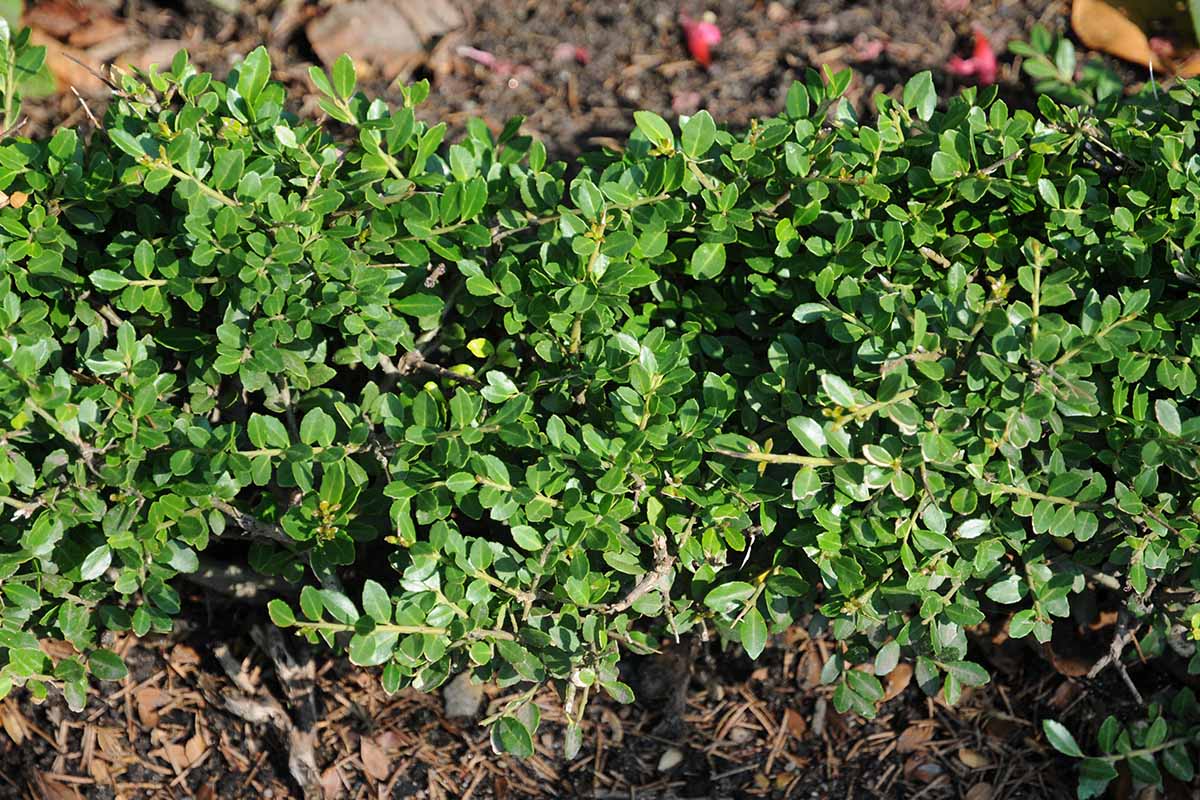
It tops out at three feet and spreads up to four feet wide, making it ideal as a hedge next to your home or patio. The spreading habit on this male cultivar is elegant and open, with small, glossy, dark green leaves.
20. Straight & Narrow
If you want a columnar Japanese holly that maintains a dramatic pencil-like shape, Straight & Narrow® (I. crenata ‘PIIIC-I’) is the one.
With mature dimensions of eight feet tall and just two feet wide, it makes a perfect hedge when planted in a row, or it can fill in a narrow space.
This male cultivar is not as tolerant of cold or heat as some other cultivars. It’s best for Zones 6 to 8, or if you plant it in a spot in Zone 5 that offers a little protection.
Bring this tall beauty home from Nature Hills Nursery.
21. Touch of Gold
Also labeled as ‘Adorned,’ ‘Touch of Gold’ originated as a sport of ‘Hoogendorn.’
Like its parent, it is wider than it is tall and requires no pruning to maintain its shape. ‘Touch of Gold’ grows to be about 18 inches tall and five feet wide in 10 years.
The leaves are exceptionally beautiful, with a small green splotch in the center surrounded by bright golden-yellow. In partial shade, the color is less striking, so be sure to plant where it will receive plenty of sunlight.
This one doesn’t do well below Zone 6.
There’s a Japanese Holly For Any Situation
Japanese hollies are one of my favorite go-to options for growing in difficult areas, whether that’s in a bit too much shade, heavy soil, or in a location where plants seem to struggle with pests and diseases.
Thank goodness they are such versatile plants, with growth habits that allow me to use them as a ground cover, decorative shrub, or privacy screen.
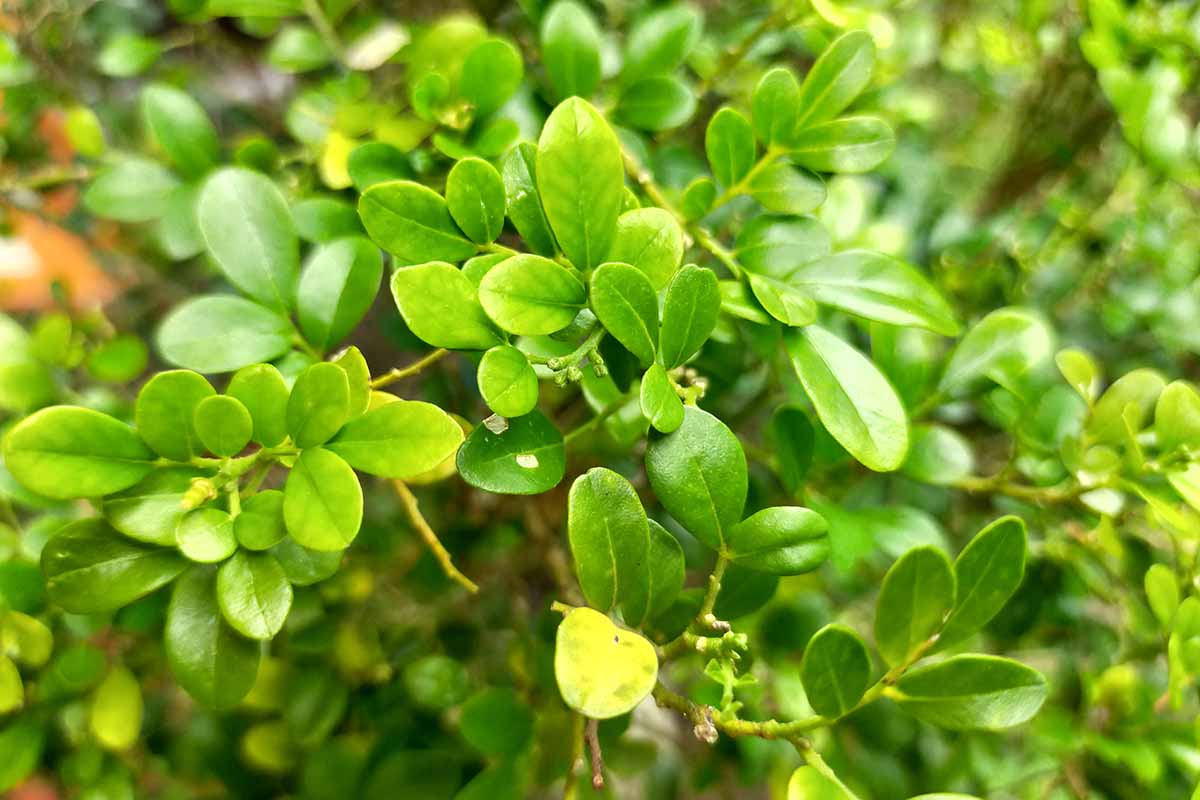
While the list above includes some of the more popular or exceptional cultivars out there, don’t be afraid to try whatever your local nursery carries. I’ve honestly yet to run into a cultivar that isn’t fantastic.
Which variety is your favorite? Let us know in the comments section below what cultivar you end up choosing and why!
Did this guide help you pick the right Japanese holly variety for your yard? If so, you might be interested in learning more about other types of holly including:
